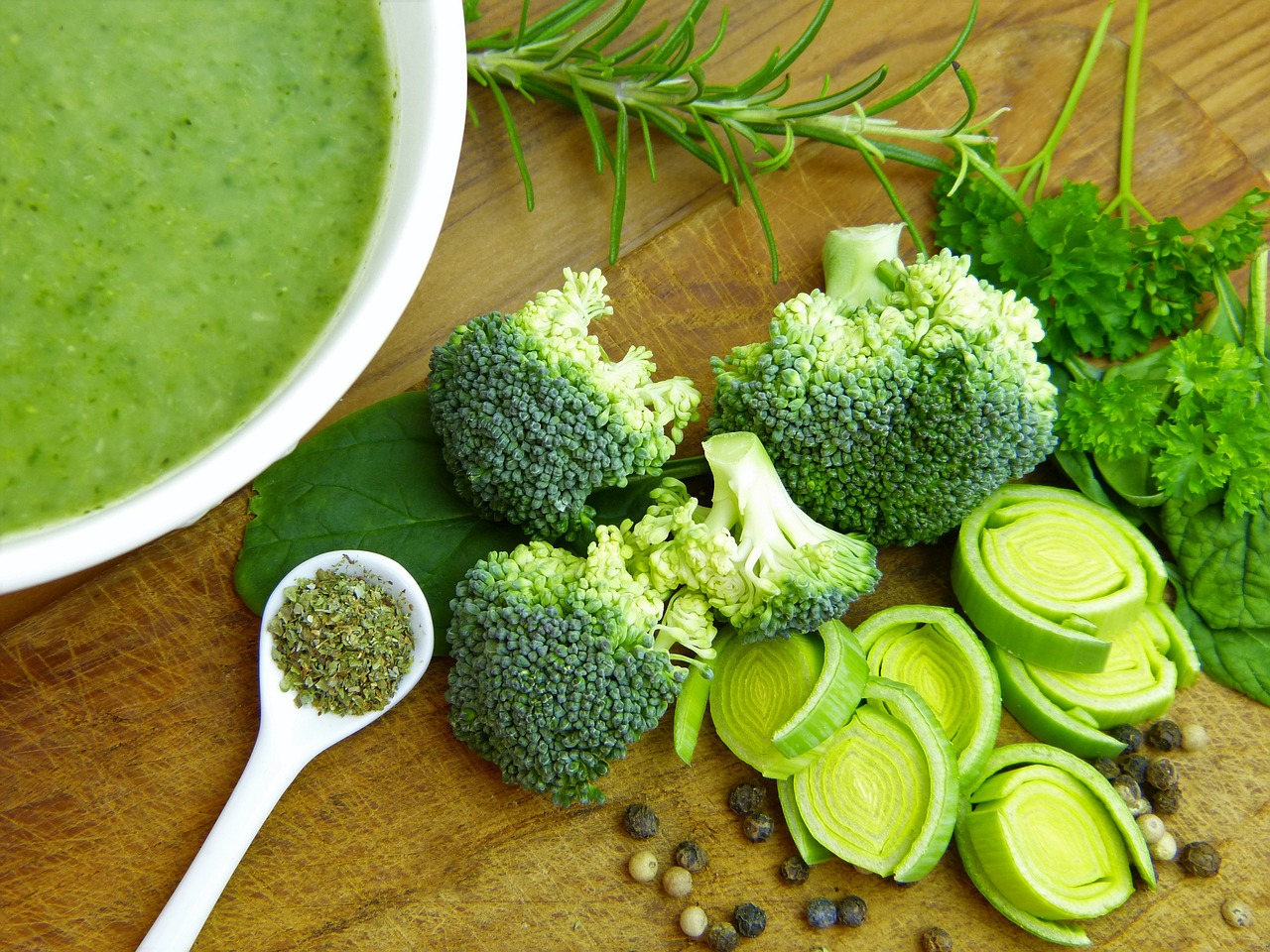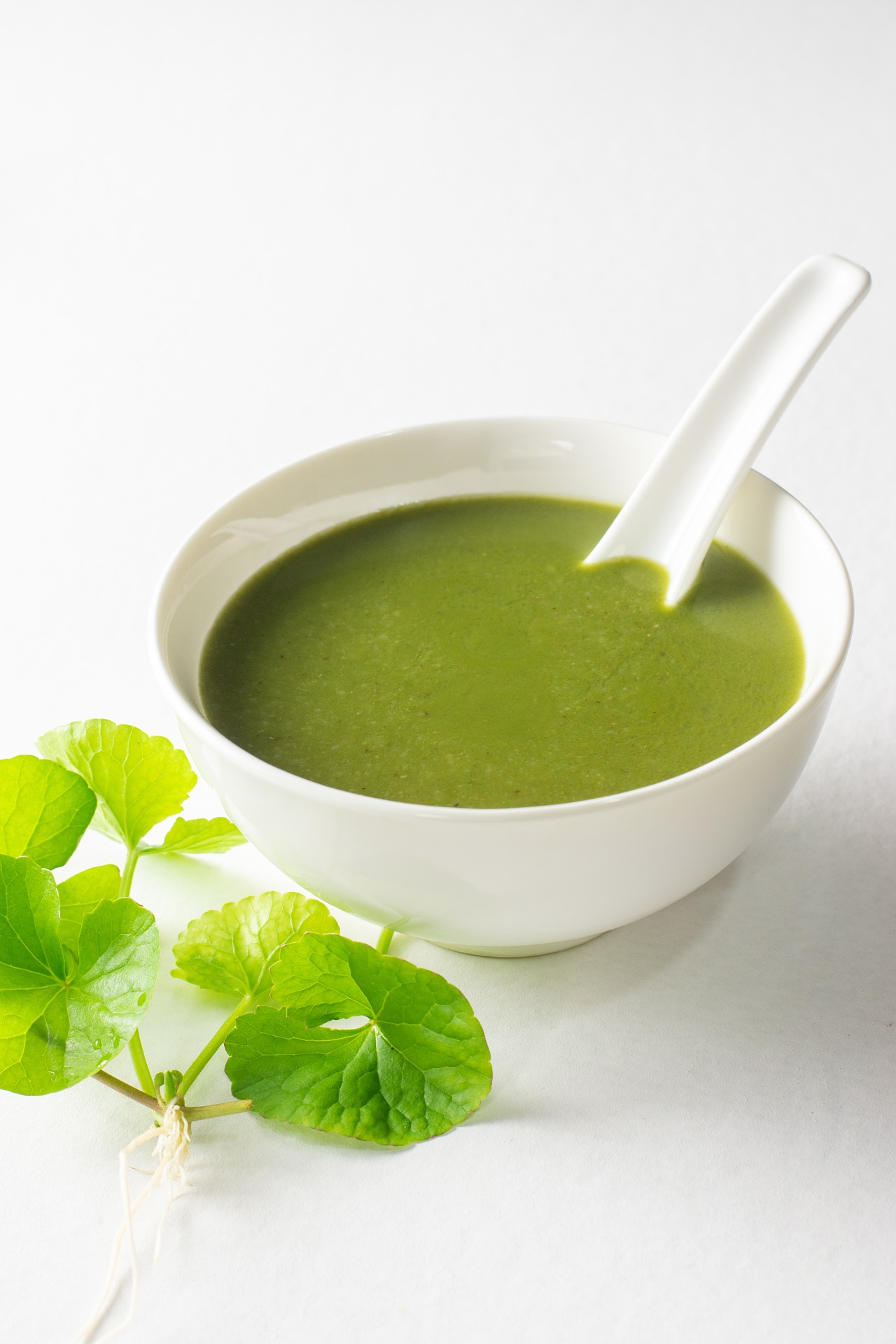
If you are looking for a simple, nutritious, and satisfying way to lose weight, you might want to try herbal porridge. Herbal porridge is a traditional dish that is made with various herbs, grains, and water or milk. It is also known as kola kenda, nanakusa gayu, or hakka herbal porridge in different parts of the world. Herbal porridge is not only delicious, but also has many health benefits that can help you achieve your weight loss goals. In this article, we will explain what herbal porridge is, what its benefits for weight loss are, how to make it at home, and how to include it in your diet.
Table of Contents
What is herbal porridge?
Herbal porridge is a type of rice porridge that is cooked with different herbs that have medicinal properties. The herbs used in herbal porridge vary depending on the region, culture, and availability. Some of the common herbs used are gotu kola, curry leaves, water dropwort, shepherd’s purse, cudweed, chickweed, nipplewort, turnip, daikon radish, mint, basil, sweet wormwood, coriander, sesame seeds, peanuts, and green tea powder. These herbs are rich in antioxidants, vitamins, minerals, fiber, and phytochemicals that can boost your immune system, lower your blood pressure and cholesterol levels, improve your digestion and metabolism, reduce inflammation and oxidative stress, and protect your liver and kidney health.
What are the benefits of herbal porridge for weight loss?
Herbal porridge can help you lose weight in several ways:
- It is low in calories and fat, but high in protein and fiber. A cup of herbal porridge can provide you with about 150 calories, 6 grams of protein, 2 grams of fat, and 4 grams of fiber. This means that it can fill you up without adding too many calories to your daily intake. Fiber also helps you feel fuller for longer and prevents overeating. Protein helps you build and maintain muscle mass, which can increase your metabolic rate and burn more calories.
- It is rich in antioxidants and anti-inflammatory compounds. These substances can help you fight free radicals and inflammation that can cause weight gain and obesity-related diseases. Antioxidants and anti-inflammatory compounds can also improve your insulin sensitivity and glucose tolerance, which can prevent diabetes and metabolic syndrome.
- It is hydrating and detoxifying. Herbal porridge has a high water content that can keep you hydrated and flush out toxins from your body. Hydration is essential for weight loss because it helps you regulate your appetite, digestion, and energy levels. Detoxification can also improve your liver and kidney function, which can enhance your fat-burning capacity.
How to make herbal porridge at home

Making herbal porridge at home is easy and inexpensive. You only need a few ingredients and equipment that you probably already have in your kitchen. Here are the basic steps and tips for making herbal porridge at home:
Ingredients and equipment
- 1 cup of long white or red whole-grain rice
- 6 cups of water
- 1 teaspoon of fenugreek seeds
- 1 teaspoon of salt or as needed
- 4 to 7 garlic cloves
- 2 cups of fresh or dried herbs of your choice
- 1/3 cup of coconut milk
- A large pot with a lid
- A blender or a mortar and pestle
Steps and tips
- Rinse the rice well under running water until the water runs clear. Drain the rice and transfer it to the pot.
- Add the water, fenugreek seeds, salt, and garlic cloves to the pot. Bring the mixture to a boil over high heat, then reduce the heat and simmer, covered, for about 40 minutes or until the rice is soft and mushy.
- While the rice is cooking, wash and chop the herbs if you are using fresh ones. If you are using dried herbs, you can skip this step. You can also mix and match different herbs according to your preference and availability. Some of the popular combinations are gotu kola and curry leaves, water dropwort and shepherd’s purse, mint and basil, or coriander and green tea powder.
- Blend or crush the herbs with a little water until you get a smooth paste. You can use a blender or a mortar and pestle for this step. The paste should have a thick consistency, similar to pesto.
- When the rice is done, stir in the coconut milk and the herb paste. Mix well until everything is well combined. You can adjust the consistency of the porridge by adding more water or coconut milk if needed. You can also adjust the seasoning by adding more salt or other spices if desired.
- Enjoy your herbal porridge hot or warm. You can also refrigerate it and reheat it later.
Variations and alternatives
You can customize your herbal porridge by using different grains, liquids, herbs, and spices. Here are some ideas for variations and alternatives:
- Instead of rice, you can use oats, quinoa, buckwheat, spelt, amaranth, or any other whole grain that you like.
- Instead of water, you can use milk, almond milk, soy milk, oat milk, or any other plant-based milk that you prefer.
- Instead of coconut milk, you can use yogurt, cream, butter, ghee, or any other dairy product that suits your taste.
- Instead of fenugreek seeds and garlic cloves, you can use ginger, turmeric, cumin, cinnamon, cardamom, cloves, nutmeg, or any other spices that enhance the flavor and health benefits of your herbal porridge.
- Instead of fresh or dried herbs, you can use herbal teas, powders, extracts, or supplements that contain the same or similar herbs that you want to use.
How to include herbal porridge in your diet
Herbal porridge is a versatile dish that you can include in your diet in various ways. Here are some suggestions on how to eat herbal porridge:
When to eat herbal porridge
You can eat herbal porridge at any time of the day, depending on your preference and schedule. Some people like to eat it for breakfast as a way to start their day with a nourishing and energizing meal. Others prefer to eat it for lunch or dinner as a way to end their day with a light and soothing meal. You can also eat it as a snack in between meals if you feel hungry or need a boost of nutrients.
What to eat with herbal porridge
You can eat herbal porridge on its own or with other foods that complement its taste and nutrition. Some of the foods that go well with herbal porridge are:
- Fruits: You can add fresh or dried fruits to your herbal porridge for a natural sweetness and extra vitamins and antioxidants. Some of the fruits that pair well with herbal porridge are bananas, apples, berries, dates, figs, raisins, apricots, mangoes, pineapples, or oranges.
- Nuts and seeds: You can sprinkle some nuts and seeds on top of your herbal porridge for a crunchy texture and more protein and healthy fats. Some of the nuts and seeds that work well with herbal porridge are almonds, walnuts, pistachios, cashews, pecans, sunflower seeds, pumpkin seeds, chia seeds, flax seeds, or hemp seeds.
- Honey or maple syrup: You can drizzle some honey or maple syrup over your herbal porridge for a natural sweetness and more antioxidants and minerals. Honey and maple syrup also have antibacterial and anti-inflammatory properties that can benefit your health.
- Coconut flakes or shreds: You can add some coconut flakes or shreds to your herbal porridge for a tropical flavor and more fiber and healthy fats. Coconut also has antimicrobial and antifungal properties that can protect your gut health.
- Granola or muesli: You can mix some granola or muesli with your herbal porridge for a crunchy texture and more fiber and whole grains. Granola or muesli also usually contain nuts, seeds, fruits, and spices that can enhance the flavor and nutrition of your herbal porridge.
How much herbal porridge to eat
The amount of herbal porridge that you should eat depends on your individual needs and goals. As a general guideline, you can follow these tips:
- Aim for about 1 to 1.5 cups of cooked herbal porridge per meal. This will provide you with about 150 to 225 calories, 6 to 9 grams of protein, 2 to 3 grams of fat, and 4 to 6 grams of fiber.
- Adjust the portion size according to your hunger level, activity level, and weight loss progress. You can eat more or less herbal porridge depending on how hungry you are, how active you are, and how fast or slow you are losing weight. Listen to your body and eat until you are comfortably full, but not stuffed.
- Balance your herbal porridge with other foods from different food groups. Herbal porridge is a good source of carbohydrates, but you also need protein, fat, vitamins, minerals, and phytochemicals from other foods to meet your nutritional needs and support your weight loss. You can eat herbal porridge with fruits, nuts, seeds, honey, maple syrup, coconut flakes, granola, muesli, or any other foods that you like and that fit your diet plan.
- Enjoy your herbal porridge in moderation and variety. Herbal porridge is a healthy and delicious dish that can help you lose weight, but it is not a magic bullet that can solve all your problems. You still need to eat a balanced and varied diet that includes other foods that you enjoy and that nourish your body and mind. You also need to exercise regularly, drink enough water, sleep well, manage your stress, and practice other healthy habits that can enhance your well-being and weight loss.
Precautions and considerations
Herbal porridge is a healthy and delicious dish that can help you lose weight, but it also has some precautions and considerations that you should be aware of before incorporating it into your weight loss plan. Here are some of them:
Herbal porridge may not be suitable for everyone
Some people may have allergies or intolerances to some of the ingredients, such as oats, coconut, or certain herbs. If you have any medical conditions or take any medications, you should consult your doctor before eating herbal porridge, as some of the herbs may interact with your treatment or worsen your symptoms. For example, some herbs may lower your blood sugar or blood pressure too much, or affect your blood clotting or thyroid function.
Herbal porridge may not provide enough calories or nutrients for your needs
Herbal porridge is low in calories and fat, but it may not be enough to meet your daily energy and nutritional requirements, especially if you are very active or have a high metabolism. You may need to eat more herbal porridge or supplement it with other foods from different food groups, such as fruits, vegetables, lean protein, healthy fats, and dairy products. You should also make sure that you get enough vitamins and minerals from your diet or from supplements, as some of the herbs may interfere with their absorption or utilization.
Herbal porridge may not be sustainable or enjoyable for long-term weight loss
Herbal porridge is a simple and convenient dish that can help you lose weight in the short term, but it may not be enough to keep you satisfied and motivated for long-term weight loss. You may get bored or frustrated with eating the same thing every day, or crave for more variety and flavor in your diet. You may also face social or cultural challenges when eating herbal porridge, such as family pressure, peer influence, or lack of availability. Therefore, you should try to incorporate herbal porridge into your diet in moderation and variety, and not rely on it as the only solution for your weight loss. You should also enjoy other foods that you like and that nourish your body and mind, as long as they fit your diet plan and goals.
Potential side effects and interactions
Herbal porridge is generally safe and beneficial for most people, but it may also have some potential side effects and interactions that you should be aware of. Here are some of them:
- Herbal porridge may cause allergic reactions in some people who are sensitive to some of the ingredients, such as oats, coconut, or certain herbs. Symptoms of an allergic reaction may include itching, rash, hives, swelling, difficulty breathing, or anaphylaxis. If you experience any of these symptoms after eating herbal porridge, you should seek medical attention immediately.
- Herbal porridge may interfere with some medications or supplements that you are taking, especially if they have similar effects or mechanisms of action as some of the herbs. For example, some herbs may lower your blood sugar or blood pressure too much, or affect your blood clotting or thyroid function. This may increase your risk of hypoglycemia, hypotension, bleeding, or thyroid problems. Therefore, you should consult your doctor before eating herbal porridge if you are taking any medications or supplements for diabetes, hypertension, blood thinning, or thyroid disorders.
- Herbal porridge may cause gastrointestinal discomfort in some people who are not used to eating high-fiber foods. Symptoms may include bloating, gas, cramps, diarrhea, or constipation. To avoid these symptoms, you should start with small amounts of herbal porridge and gradually increase your intake as your body adapts. You should also drink plenty of water to help the fiber move through your digestive system.
- Herbal porridge may contain some toxins or contaminants that can harm your health if consumed in large amounts or for a long time. For example, some herbs may contain alkaloids, glycosides, saponins, tannins, or oxalates that can have adverse effects on your liver, kidney, nervous system, or blood cells. Some grains may also contain gluten, aflatoxins, heavy metals, or pesticides that can trigger allergic reactions or cause toxicity. Therefore, you should choose high-quality ingredients from reputable sources and follow the recommended dosage and duration of use for herbal porridge.
Who should avoid herbal porridge
Herbal porridge is generally safe and beneficial for most people, but some people may need to avoid it or limit their intake for various reasons. Here are some of the groups of people who should avoid herbal porridge:
- People who have allergies or intolerances to some of the ingredients, such as oats, coconut, or certain herbs. Symptoms of an allergic reaction may include itching, rash, hives, swelling, difficulty breathing, or anaphylaxis. If you experience any of these symptoms after eating herbal porridge, you should seek medical attention immediately.
- People who have medical conditions or take medications that may interact with some of the herbs. For example, some herbs may lower your blood sugar or blood pressure too much, or affect your blood clotting or thyroid function. This may increase your risk of hypoglycemia, hypotension, bleeding, or thyroid problems. Therefore, you should consult your doctor before eating herbal porridge if you have diabetes, hypertension, blood thinning, or thyroid disorders.
- People who are on a low-fiber diet for certain conditions or situations. For example, you may need to follow a low-fiber diet if you have narrowing of the bowel due to a tumor or an inflammatory disease, if you have had bowel surgery, or if you are having treatment that damages or irritates your digestive system3. A low-fiber diet limits the types of vegetables, fruits and grains that you can eat, and herbal porridge may not be suitable for this diet.
- People who are pregnant or breastfeeding. There is not enough evidence on the safety and efficacy of herbal porridge for pregnant or breastfeeding women. Some herbs may have hormonal effects that could affect the development of the fetus or the quality and quantity of breast milk. Therefore, it is advisable to avoid herbal porridge or consult your doctor before eating it if you are pregnant or breastfeeding.
How to store and reheat herbal porridge
Herbal porridge is a delicious and nutritious dish that can help you lose weight, but you may wonder how to store and reheat it properly. Here are some tips on how to do that:
- To store herbal porridge, you should let it cool completely before transferring it to an airtight container. You can keep it in the refrigerator for up to 5 days or in the freezer for up to 3 months.
- To reheat herbal porridge, you have two options: using a stovetop or a microwave oven. Both methods are easy and quick, but you may need to add some extra liquid, such as water or milk, to restore the smooth consistency of the porridge.
- To reheat herbal porridge on the stovetop, you should place the desired amount of porridge in a saucepan and add some liquid. You should bring the mixture to a boil over high heat, then reduce the heat and simmer, stirring occasionally, until the porridge is hot and steaming.
- To reheat herbal porridge in the microwave oven, you should place the desired amount of porridge in a microwave-safe bowl and add some liquid. You should microwave the porridge on medium heat for 1 to 2 minutes, stopping and stirring halfway through. You should check if the porridge is hot and steaming, and if not, microwave for another 30 seconds or until done.
- You can enjoy your reheated herbal porridge as it is or with some toppings of your choice, such as fruits, nuts, seeds, honey, maple syrup, coconut flakes, or granola.
Conclusion
Herbal porridge is a traditional dish that can help you lose weight in a natural and healthy way. It is made with rice, water or milk, and various herbs that have medicinal properties. Herbal porridge can provide you with many benefits for weight loss, such as low calories, high protein and fiber, antioxidants and anti-inflammatory compounds, hydration and detoxification. You can easily make herbal porridge at home with a few ingredients and equipment. You can also customize your herbal porridge by using different grains, liquids, herbs, and spices. You can include herbal porridge in your diet as a breakfast, lunch, dinner, or snack, and pair it with other foods that complement its taste and nutrition. However, you should also be aware of some precautions and considerations before eating herbal porridge, such as allergies, intolerances, medical conditions, medications, supplements, low-fiber diet, pregnancy, breastfeeding, toxins, contaminants, portion size, balance, variety, and sustainability. Herbal porridge is not a magic bullet that can solve all your weight loss problems, but it is a delicious and nutritious dish that can support your weight loss journey.
Try herbal porridge today and see the difference for yourself!
What is herbal porridge, and how can it aid in weight loss?
Herbal porridge is a nutritious dish made from whole grains, herbs, and spices. It can aid in weight loss by providing a filling and low-calorie meal option packed with fiber, vitamins, and minerals, which helps promote satiety and regulate appetite.
What are some common herbs and spices used in herbal porridge for weight loss?
Common herbs and spices used in herbal porridge include cinnamon, ginger, turmeric, and cayenne pepper. These ingredients not only add flavor but also have metabolism-boosting and appetite-suppressing properties, aiding in weight loss efforts.
How does herbal porridge compare to other breakfast options for weight loss?
Herbal porridge stands out as a weight-loss-friendly breakfast option due to its high fiber content, which promotes fullness and prevents overeating throughout the day. Unlike sugary cereals or pastries, herbal porridge provides sustained energy and helps regulate blood sugar levels.
Can herbal porridge be customized to suit different dietary preferences or restrictions?
Yes, herbal porridge is highly customizable and can be adapted to suit various dietary preferences and restrictions. For example, it can be made with gluten-free grains like quinoa or oats for those with gluten intolerance, or with non-dairy milk for vegans or individuals with lactose intolerance.
How often should herbal porridge be consumed as part of a weight loss plan?
Herbal porridge can be consumed as a healthy breakfast option several times a week as part of a balanced weight loss plan. However, it’s essential to complement it with other nutritious meals and snacks throughout the day to ensure a well-rounded diet.
What are some additional ingredients that can be added to herbal porridge to enhance its weight loss benefits?
Adding protein-rich ingredients like nuts, seeds, or Greek yogurt to herbal porridge can further enhance its weight loss benefits by increasing satiety and supporting muscle maintenance during weight loss.
Are there any potential pitfalls to avoid when incorporating herbal porridge into a weight loss plan?
One potential pitfall to avoid is adding excessive amounts of sugar or high-calorie toppings to herbal porridge, which can negate its weight loss benefits. It’s essential to keep portions moderate and focus on incorporating nutrient-dense ingredients.
Can herbal porridge be prepared in advance for convenience during busy mornings?
Yes, herbal porridge can be prepared in advance and stored in the refrigerator for several days. Simply reheat it in the microwave or on the stovetop before serving, adding a splash of milk or water to adjust the consistency as needed.
How does herbal porridge support overall health besides aiding in weight loss?
Herbal porridge is not only beneficial for weight loss but also supports overall health due to its nutrient-rich ingredients. It provides essential vitamins, minerals, and antioxidants that promote digestion, immune function, and heart health.
What are some tips for making herbal porridge more flavorful and enjoyable?
Experiment with different combinations of herbs, spices, and toppings to find what suits your taste preferences. Adding fresh fruit, nut butter, or a drizzle of honey can enhance the flavor and make herbal porridge a satisfying and enjoyable part of your weight loss journey.



